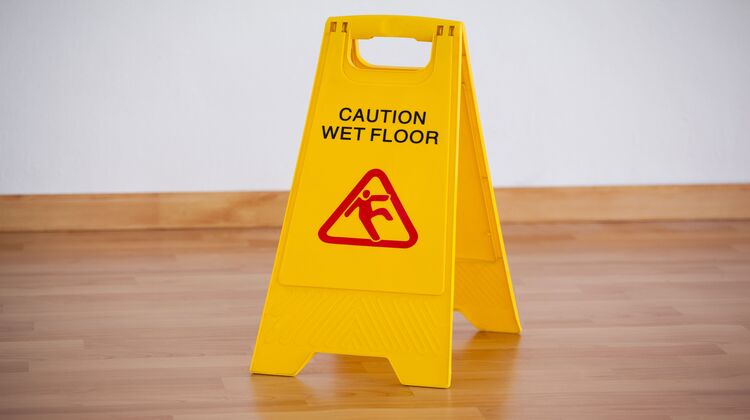Workplace safety: what employers should do when there is accidents in workplace
You may have done your best as an employer to offer a safe working environment for your employees. However, there are situations when workplace accidents are unavoidable. Let's look at the types of workplace accidents and the procedures that need to be taken to prevent them.
As an employer, you’re probably doing the best you can in providing a safe environment for your staff. However, accidents in the workplace sometimes cannot be avoided.
According to statistics by the Department of Occupational Safety and Health (DOSH), a total of 6,933 workplace accidents had been recorded as at December 2020. Out of those cases, 213 were fatal and 274 resulted in permanent disablement.
Types of workplace accidents
An accident is an event that may lead to injuries, death or even property damage.
For example, while working at a workshop, a metal rod had fallen on Hakim leading to an injury. As a responsible employer, you would have provided a protection plan to cover Hakim’s medical treatment.
Accidents can happen in many ways, depending on the working environment. Situations in which accidents can happen include:
- Falling objects from heights
- Employee stepping on or hitting an object
- Employee falling Employee getting caught in an object
- Electrocution, explosions, or fires Exposure to toxic substances, radiation or pollution.
The top 3 factors of workplace accidents are attributed to individuals, the organization and the environment.
The first factor on individuals mainly refers to personal traits leading to ill-fated situations such as a hard of hearing, poor sight, age, skill level, failure to follow rules and workplace pressure.
The factor on the organization, on the hand, refers to the job nature whether it is dangerous or not, the work schedule and internal issues that would result in conflict.
Finally, the environmental factor refers to working conditions such as crowded areas, unmaintained equipment, and temperatures that are too high or low.

Office safety
Furthermore, a workplace that looks safe doesn’t always guarantee a free pass on any accident. Some incidents may include slipping due to a worn out carpet, electrocution or “sick building syndrome” where employees would feel ill, being in the office due to the environment.
Based on the National Institute of Occupational Safety and Health (NIOSH), there are 4 types of hazards in the workplace that may cause accidents.
- Physical Hazard – hazards related to temperature, lighting, noise, vibrations/tremors, electrical energy, equipment and machines.
- Biological Hazard – bacteria, viruses, and/or fungus that may come from air conditioning or the vicinity of the workplace.
- Chemical Hazard – acid substances or organic solvents from washing/cleaning.
- Ergonomic Hazard – repetitive movements, berpunca dari pergerakan berulangan, contact pressure, standing/sitting for long periods of time.
Psychosocial Hazard – emotional stress at the workplace such as sexual harassment, heavy workload, working shifts, low salary and others.

Employers’ preparation for workplace accidents
Ideally, employers should undertake the best efforts to reduce the risks of workplace accidents. This can be achieved by following the Occupational Safety and Health (OSH) guideline that is subject to the Occupational Safety and Health Act 1994 (Act 514).
OSH aims to safeguard all employees in the workplace from accidents, injuries and exposure to danger. For further information regarding OSH, refer to the official website of the Department of Occupational Safety and Health.
That said, all this preparation doesn’t promise zero accidental events.
The next step you can take as an employer is to prepare a protection plan for employees in the event of accidents. With a protection plan, you will be able to provide the best treatment for them.
Employees would also feel safe and secure with a protection plan, hence increase their productivity levels too.
As for the employers, you then would not need to fork out organization finances to cover treatments in the event of an accident. You would also be spared from worrying of sudden costs that could interfere with the organization’s financial standing. Not to mention, should an employee require ongoing treatment, it could cost tens of thousands of Ringgit.
Having put into place protection plans for your employees, you will then be able to better focus on far more important activities such as driving sales and organization growth.
To find out more about protection plans, read here.

Providing a safe workplace and assurance of protection over accidents will motivate employees to work better and increase their quality of work.
With the provision of protection to employees, employee loyalty and attraction of new talents to the organization are sure to follow.
References:
- Statistik: https://www.dosm.gov.my/v1/uploads/files/5_Gallery/2_Media/4_Stats%40media/4-Press_Statement/2021/7.%20Julai/KENYATAAN%20MEDIA-NOA-combine(1).pdf
- Kepentingan keselamatan dan kesihatan pekerjaan: https://www.majalahsains.com/kepentingan-keselamatan-dan-kesihatan-pekerjaan/
- Panduan Keselamatan di Pejabat NIOSH: http://www.niosh.com.my/images/Publication/Brochure/KeselamatanPejabat.pdf
